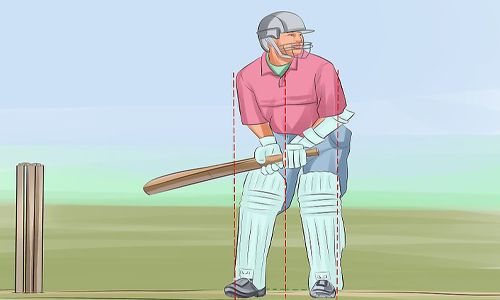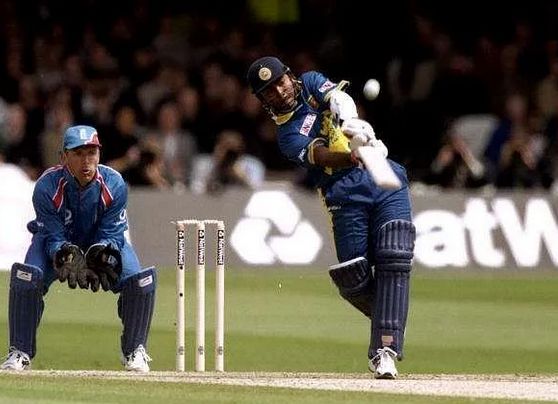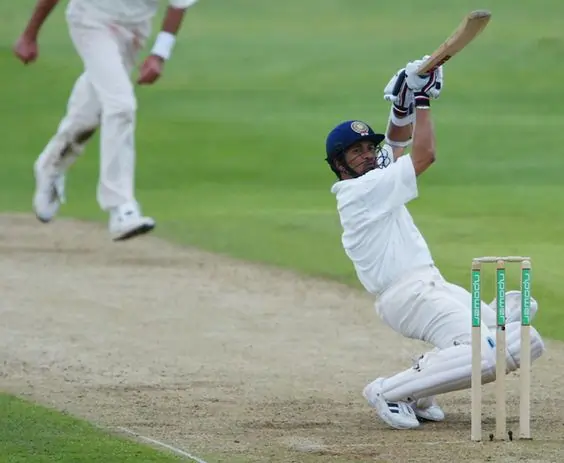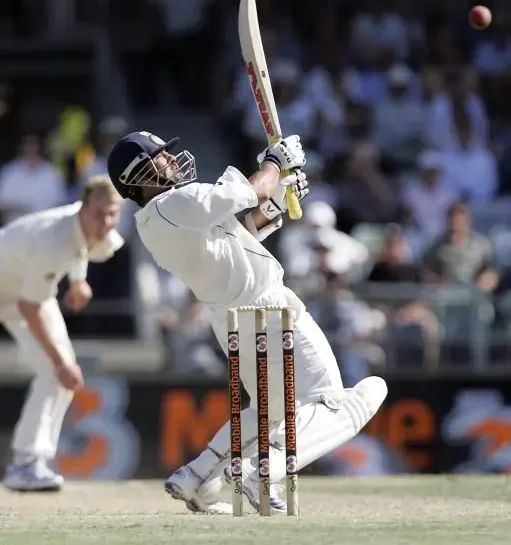Area Behind the Stumps in Cricket
In cricket, the area behind the stumps is an important part of the field, holding strategic significance for both the batting and fielding teams. This region encompasses the space where the wicketkeeper, slip fielders, and leg side fielders position themselves, forming a crucial line of defense against runs and aiming to create wicket-taking opportunities. But this area, often overlooked, plays a dynamic role in the game, especially in the context of dismissals like catches, stumpings, and run-outs. The space right behind the cricket stumps doesn’t have a fancy name. But cricket folks call it a couple of things depending on what’s going on:
- Wicketkeeper Spot: This is just a general way of saying where the wicketkeeper stands while the bowler throws the ball.
- Behind Square on the Leg Side: This is a longer way of saying the same area, but mostly used when the wicketkeeper needs to move a little that way to catch balls that spin away from the batter (like off-spin or leg-spin throws).

Understanding the Area Behind the Stumps
The Role of Wicketkeepers
Wicketkeepers are the unsung heroes of the cricket field. Positioned directly behind the stumps, they have a multifaceted role that demands quick reflexes, exceptional glovework, and strategic decision-making. Their vigilance often leads to crucial dismissals, making them an indispensable asset to the team.

Slip Fielders and Their Vital Role
The slip cordon, positioned strategically behind the batsman on the off side, consists of slip fielders whose task is to catch edges produced by the batsman’s shots. This close catching position requires impeccable anticipation, lightning-fast reactions, and exceptional hand-eye coordination.
Strategies for Effective Close-in Fielding
Close-in fielding positions, including silly point and short leg, are designed to put pressure on the batsman and induce mistakes. Fielders in these positions need nerves of steel as they stand just a few feet away from the batter, ready to pounce on any opportunity. The ability to distract, provoke, and stay alert is crucial in these positions.
The Mind Games: Sledging and Distraction
Cricket is not just a physical game; it’s a mental battle too. The area behind the stumps becomes a hub for psychological warfare. Players engage in verbal exchanges to distract the batsmen, break their concentration, and gain a psychological edge. This strategic banter, known as sledding, can influence a player’s performance.
Psychological Tactics
Sledding involves a range of tactics, from witty remarks to provocative statements. The goal is to disrupt the batsman’s mental state, causing them to make mistakes or lose focus. Sledding is an art mastered by a few and despised by many, but its impact on the game cannot be denied.
Impact on Batsmen’s Performance
The constant chatter and psychological pressure can lead to two outcomes: the batsman either succumb to the pressure, resulting in a dismissal, or uses the negativity as motivation to perform better. The area behind the stumps thus becomes a battleground for wits, with both parties striving to gain the upper hand.
Innovations in Fielding Positions
Introduction of Short Leg and Silly Point
Innovations in fielding positions have expanded the strategic possibilities of the area behind the stumps. Positions like short leg and silly point require fielders to be positioned very close to the batsman, almost within striking distance. These positions aim to exploit the batsman’s hesitations and encourage risky shots.
Deepening the Slip Cordon
The slip cordon has evolved from a standard set of slips to a deeper and more specialized arrangement. This adjustment accommodates the aggressive intent of modern batsmen, who often play away from their bodies. By positioning slip fielders deeper, teams aim to intercept edges that may travel quickly and low. Also, read about What is Mentor in Cricket
Physical and Mental Challenges
Vigilance and Reflexes of Wicketkeepers
Wicketkeepers undergo rigorous training to develop their reflexes and anticipation. They need to react swiftly to deliveries, judging whether to go for a catch, stump or let the ball through. This level of vigilance demands not only physical agility but also a deep understanding of the game.
Stamina Required for Close-in Fielders
Fielders positioned close to the batsmen require immense stamina. They maintain a crouched position for extended periods, always ready to react. This demanding physical posture challenges their endurance and calls for dedicated training to avoid fatigue during crucial stages of the game.
Technology’s Role in Umpiring
DRS and Its Effect on Decision-making
The Decision Review System (DRS) has transformed decision-making in cricket. Players now have the option to challenge on-field umpires’ decisions, using technology to review dismissals. The area behind the stumps becomes a focal point for players to gauge the need for a review, requiring swift judgment.
Fair Play and Controversies
While technology has brought transparency, it has also sparked debates. The accuracy of ball tracking and predictive path raises questions about the system’s reliability. The discussions around DRS and its use add an extra layer of intrigue to the area behind the stumps.
Entertaining the Crowd: Acrobatic Saves
Fielders at the Boundary
Not all fielding action happens close to the stumps. Fielders stationed at the boundary use the area behind the stumps to their advantage as they leap, dive, and make acrobatic saves to prevent the ball from reaching the fence. These athletic displays contribute to the excitement of the game.
Spectacular Diving and Leaping
From spectacular diving catches to boundary-saving leaps, these fielders exhibit exceptional athleticism. Their efforts in the outfield resonate with the crowd, adding an element of awe and wonder to the area behind the stumps.

Area Behind the Stumps in Different Formats
Test Matches: The Ultimate Test of Skill
In Test cricket, the area behind the stumps is a true test of players’ skill and patience. With longer playing durations, the focus on precision and anticipation increases. Wicketkeepers and slip fielders have a more prominent role in this format, where every edge and nick counts.
One Day Internationals: Balancing Act
In ODIs, the balance between aggression and caution is vital. Teams opt for a more conservative field setting to control the scoring rate. This format demands a mix of attentive wicketkeeping, astute slip fielding, and calculated field placements in the area behind the stumps.
T20s: Quick Reflexes and Dynamic Positions
The fast-paced nature of T20 cricket demands lightning-quick reflexes from wicketkeepers and slip fielders. With the focus on boundaries and rapid scoring, these players need to be dynamic and ready for any eventuality in the area behind the stumps.
Training and Preparation
Specialized Fielding Coaches
Teams employ specialized coaches to enhance fielding skills, including those in the area behind the stumps. These coaches design drills and exercises to improve reflexes, anticipation, and catching techniques. The goal is to transform this region into a stronghold of strategic advantage.
Drills and Exercises for Reflex Improvement
Wicketkeepers and slip fielders engage in drills that enhance their reflexes and agility. Exercises involving reaction balls, simulated match scenarios, and video analysis contribute to their growth as players adept in the art of close-in fielding.
Evolution Over the Years
Historical Changes in Fielding Strategies
Over the years, cricket’s fielding dynamics have evolved. The focus on fitness, agility, and athleticism has led to innovative fielding positions and strategies. The area behind the stumps has become a canvas for experimentation, leading to novel techniques and tactics.
Impact of T20 Cricket on Fielding Dynamics
The advent of T20 cricket revolutionized the game’s landscape. Agile fielding in the area behind the stumps is now more important than ever, with teams recognizing its potential to turn matches. The increased emphasis on quick dismissals and athleticism has reshaped the fielding approach.

Behind-the-Scenes: Team Communication
Coordination Between Wicketkeeper and Slip Fielders
The area behind the stumps is a hub of coordination and communication. Wicketkeepers and slip fielders constantly exchange information about the batsman’s behavior, shot selection, and areas of vulnerability. This teamwork aims to enhance the team’s fielding strategy.
Non-Verbal Signals and Gestures
In a bid to maintain secrecy, teams often use non-verbal signals and gestures to communicate. These subtle cues provide valuable insights to the slip fielders, helping them position themselves optimally and react effectively to the batsman’s shots.
The Importance of Agility and Flexibility
Swift Movement and Positioning
Fielders in the area behind the stumps need to move swiftly to respond to the batsman’s shots. The ability to adjust their positions and angles in a fraction of a second can mean the difference between a dismissal and a boundary.
Recovery After Prolonged Fielding
The physically demanding nature of close-in fielding can take a toll on players. Adequate recovery strategies are essential to prevent burnout and injuries. Proper rest, hydration, and post-match routines contribute to players’ longevity in the game. Also, discover about Virat Kohli Biography
Safety Measures for Close-in Fielders
Protective Gear and Equipment
Close-in fielders wear protective gear to shield themselves from fast deliveries and powerful shots. Padded helmets, shin guards, and gloves with reinforced padding provide essential protection in this high-risk area.
Balancing Risk and Reward
Fielders in the area behind the stumps face the constant challenge of weighing risk against reward. While standing close offers opportunities for quick dismissals, it also exposes them to potential injuries from powerful shots. This delicate balance requires strategic decision-making.

Strategies for Different Playing Conditions
Seam Movement on Green Tracks
In conditions favorable to seam movement, the area behind the stumps becomes a hotspot for catching edges. Wicketkeepers and slip fielders need to be extra vigilant, as the unpredictable seam movement can deceive even the best of batsmen.
Spin-Friendly Pitches and Close Catching
On spin-friendly pitches, slip fielders need to adjust their positions and reflexes. The turn and bounce generated by spinners can result in edges that travel quickly and unpredictably. The coordination between wicketkeeper and slip fielders becomes even more crucial.
Conclusion
The area behind the stumps in cricket is a microcosm of the sport’s complexity and depth. From psychological battles to acrobatic fielding, from close-in tactics to rapid reflexes, this region holds a wealth of intrigue and strategic importance. As cricket evolves, so does the significance of this space, solidifying its role as a critical battleground within the gentleman’s game.
FAQs
Why is the area behind the stumps crucial in cricket?
The area behind the stumps holds fielders, wicketkeepers, and slip fielders who play a pivotal role in catching edges, making dismissals, and engaging in psychological battles.
What is the purpose of sledding in cricket?
Sledding involves using verbal tactics to distract and unsettle batsmen, impacting their performance by creating psychological pressure.
How has technology changed decision-making in cricket?
Technology, especially the Decision Review System (DRS), has given players the option to challenge on-field umpires’ decisions, introducing an element of accuracy and strategy.
What are some challenges faced by close-in fielders?
Close-in fielders need to balance their physical endurance with the risk of injury, maintaining vigilance and reacting swiftly to the batsman’s shots.
How has T20 cricket influenced the area behind the stumps?
T20 cricket’s fast-paced nature has heightened the importance of swift reflexes and dynamic fielding in the area behind the stumps, contributing to quick dismissals and match-changing moments.







